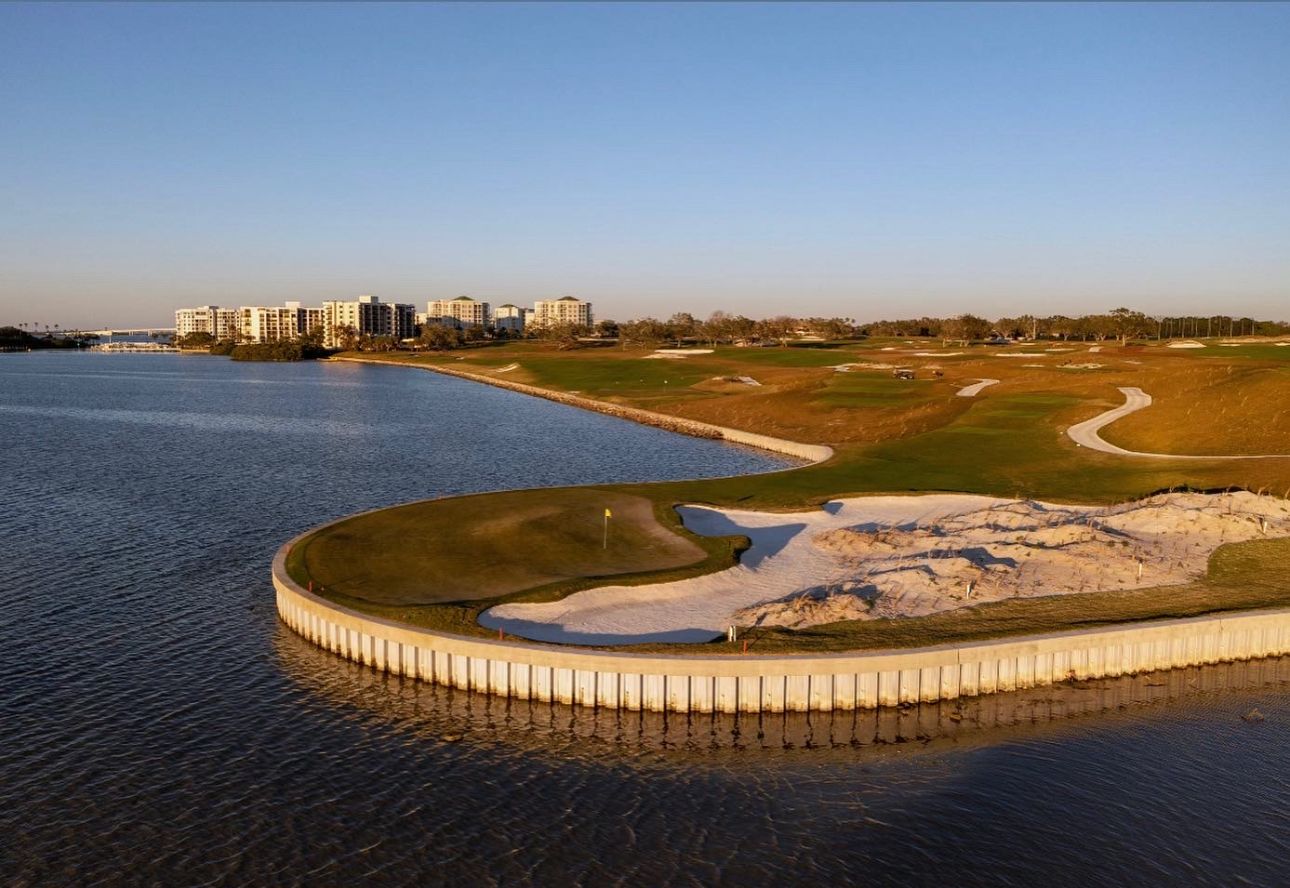- THE SOCIETY Newsletter
- Posts
- The SOCIETY Newsletter #96
The SOCIETY Newsletter #96
Paul “Pete” Dye
The Man Who Made Golfers Think Again: Pete Dye and the Rebirth of American Golf Design

On November 9, 1925, in Urbana, Ohio, a man was born who would come to reshape how golf looks, plays, and feels in America. His name was Paul “Pete” Dye, and though he never held a pencil like Mackenzie or built greens like Raynor, he wielded a vision that would ignite a revolution in golf architecture.
Before Pete Dye, most postwar American courses had fallen into a predictable mold: wide corridors, gentle hazards, greens that obediently followed the fairway grade. It was golf meant to be enjoyed, not contemplated. But Dye—equal parts craftsman and provocateur—reintroduced thought, tension, and consequence to the modern game.
⸻
🌾 From Insurance to Inspiration
Dye served in World War II, returned home, and made a successful living in the insurance business before turning his passion for golf into a calling. His first designs in the 1950s were modest—Nine Hole gems like El Dorado in Indianapolis—but his style sharpened after a pilgrimage to Scotland in 1963.
There, he walked the likes of Carnoustie and Prestwick and found himself mesmerized not by their fairness, but by their quirk. The randomness of pot bunkers, the blindness of approach shots, the wildness of nature itself—these became Dye’s building blocks.
He returned home determined to bring edge and emotion back to American golf.
⸻
🧱 The Era of Strategy and Scar Tissue

Pete and Alice Dye
Dye’s breakout came with Crooked Stick Golf Club (1964–1966), built mostly by hand with his wife, Alice Dye, a formidable designer and player herself. It was a rebel’s course—deep bunkers, rippling fairways, and an unapologetic demand for precision.
From there came Harbour Town (1969) with a young Jack Nicklaus at his side—a revolutionary design that favored finesse over brute power. Its small greens and tight sightlines stood in complete contrast to the massive, formulaic courses dominating the Tour.
And then came TPC Sawgrass, the theater of tension itself. Dye took an unremarkable piece of Florida swamp and turned it into golf’s greatest stage—a symphony of angles, deception, and the now-legendary island green at 17.

TPC Sawgrass 17th under construction
Dye once said,
“Golf is not a fair game, so why should I build a fair course?”
That philosophy crystallized in every contour he shaped.
⸻
🪚 The Dye DNA

Dye’s Whistling Straights (Golf Digest Photo)
A Pete Dye course often stands out:
• Railroad ties bracing bunkers and waterlines.
• Pot bunkers cut deep like scars into the landscape.
• Greens perched and contoured with wicked humor.
• Visual intimidation—a line that dared you to question what was safe.
But beneath the menace was brilliance: his designs rewarded strategy over strength, creativity over conformity. He brought back the chess match that Golden Age designers had mastered—Macdonald’s angles, Ross’s subtlety, Raynor’s courage—translated into a distinctly modern tongue.
⸻
💡 The Legacy

Dye’s Ocean Course at Kiawah (Golf Digest photo)
Dye’s greatest contribution may not be any one course, but rather an entire generation of architects who followed his path. Bill Coore, Tom Doak, Gil Hanse, Rod Whitman, Brian Silva, David McLay Kidd—all credit Dye as both mentor and catalyst.
He taught that design is not about beauty alone, but about engagement: how a course makes you think, feel, and adapt.
Dye’s apprentices learned that a course could be beautiful because it was hard, interesting because it was uncomfortable, and timeless because it challenged the soul as much as the swing.
⸻
🌾 Why It Matters
Pete Dye restored the conversation between golfer and ground.
He reminded America that golf architecture is an art of emotion—not simply engineering.
He brought back the ruggedness of the links, the spirit of adventure, and the laughter that comes after a double bogey on a hole that beat you fair and square.
And in doing so, he bridged golf’s Golden Age and its modern renaissance.
⸻
“Every time I make a golf course,” Dye once said,
“I’m trying to build one I haven’t seen before.”
And in the process, he helped America see golf itself—anew.
The First Annual Society of Golf Historians Outing
IfIf you haven’t registered yet and would like to join us, please email me as soon as possible at [email protected].

The 4th of Belleair
Our First Annual Society Event will be hosted at the Top 100-ranked Belleair Country Club in Belleair, Florida. We’ll tee off mid-morning on Belleair’s celebrated West Course, followed by time to freshen up, enjoy a few drinks in the clubhouse bar, and then sit down together for dinner—featuring a series of engaging golf history talks.

Aerial of the West Course
Registration is $500 for non-members, with $100 of that applied toward an annual membership in The Society of Golf Historians.

The 7th at Belleair
COMING SOON ON THE TALKINGOLF HISTORY PODCAST
• Part 2 of the History of William Flynn
• The Story of the American Golf Museum
• The History of Leith Links
THANK YOU
Thank you again for taking the time to read our weekly newsletter. I would very much like to do a podcast on Pete Dye, if any of you are experts on his life and designs. Until next time…
